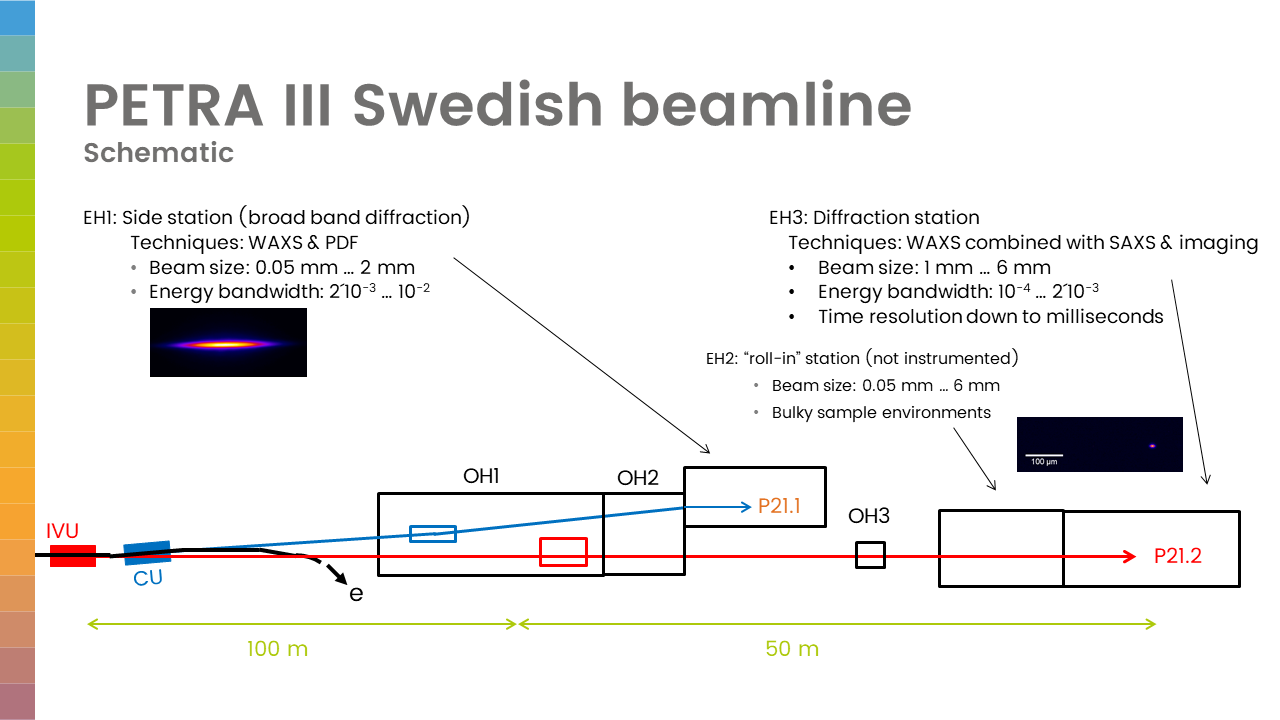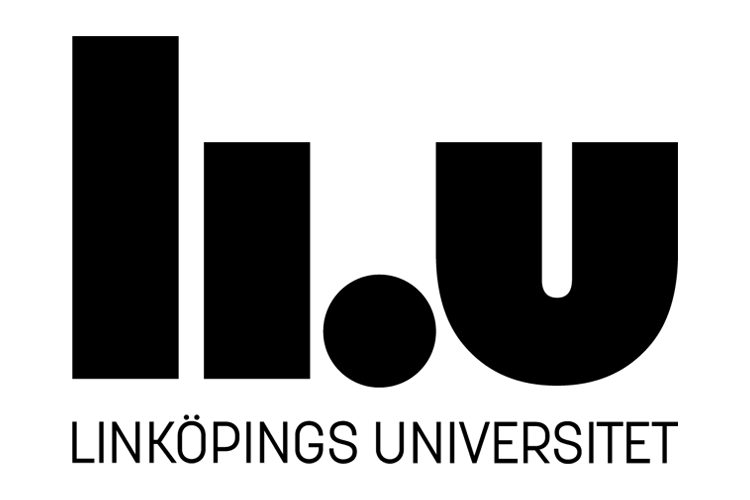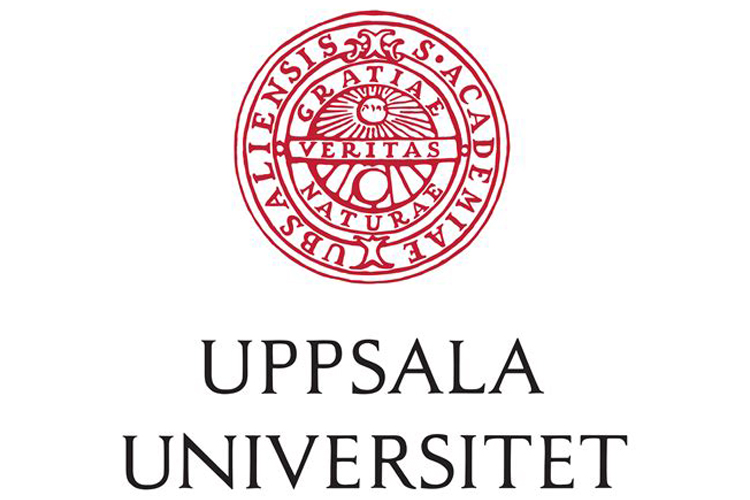The Swedish Materials Science Beamline
The Swedish Materials Science beamline is a high-energy X-ray beamline with two independently operated branches (P21.1 and P21.2). The P21.1 branch was specifically designed for materials physics and chemistry and the P21.2 branch for materials engineering and surface processes.

The advantages of high X-ray energies in materials research
The X-rays in the PETRA III Swedish Materials Science beamline have high energy, with the possibility to vary the energy level between 40 keV and 150 keV. Such high energies provide several advantages when conducting materials science experiments.
High energies are able to penetrate deep inside materials; and, importantly, the signals from deep within the material are strong enough to escape and be detected. This enables non-destructive experiments of bulk properties.
High energies mean that experiments can be conducted in air and in transmission geometry, in which the scattering is concentrated in the forward direction with minimal polarization effects. This allows the use of a variety of sophisticated and special-purpose sample environments - with a straightforward detector arrangement.
The high X-ray energy allows for the collection of complete Debye-Scherrer rings on area detectors. This enables simultaneous wide angle X-ray scattering (WAXS) and small angle X-ray scattering (SAXS) measurements and so a large range of lattice planes can be investigated at the same moment in time.
The X-ray beam can also be focussed to a sub-micrometer spot size for a high spatial resolution. The high intensity allows time-resolved data and non-destructive observations of dynamical processes. The beamline offers a wide range of techniques, covering atomistic to macroscopic length scales by WAXS, pair distribution function (PDF) measurements, SAXS and imaging.
This means that by utilizing the unique properties of high-energy X-rays, a number of outstanding questions in materials science can be investigated in situ, with high spatial and temporal resolution, and under operando conditions i.e. the experiments actually represent the reality of the phenomenon being investigated.
The experiments and societal challenges
The mechanical properties of state-of-the-art structural materials, such as advanced steels, additive manufactured superalloy components, and hard protective ceramic coatings, are typically related to microstructural features such as grain size and orientation, grain boundary character, lattice strain, and cracks and voids. Understanding the evolution of these under normal operating conditions, such as e.g., thermo-mechanical loading, are important for the development and optimization of such materials. For catalysts on the other hand, in general, an understanding of the interplay between catalyst structure, gas phase, and the catalytic activity on atomistic length scales under realistic reaction conditions, at ambient pressures and elevated temperatures, are required to improve the catalyst efficiency and performance. When it comes to energy materials, including batteries, fuel cells and hydrogen storage materials, a microstructural understanding, with both temporal and spatial resolution of crystallographic phases, local order, texture and lattice strains during the chemical processes is desirable.
By answering such materials specific questions, innovation and development of new and improved materials in all fields will follow, addressing societal challenges within the fields of energy, environment, health, transportation, and information technology, which all are important business areas for Swedish industries. Advanced materials characterization is therefore a key driver behind most major technological advances and breakthroughs.
Development of new and improved materials almost always contributes to the fulfillment of several of the United Nations’ Sustainable Development Goals, directly and indirectly.
The Swedish materials science beamline, with its particular capacity of time- and space-resolved in situ and in operando studies, is an extremely powerful tool to study real world materials under real world conditions. The Swedish materials science beamline at PETRA III, therefore gives national added values by creating opportunities in the Swedish industrial sector as well as an in-depth scientific understanding to provide technical solutions for present and future grand challenges.
Further information
For more technical information about the Swedish beamline see this DESY site .



